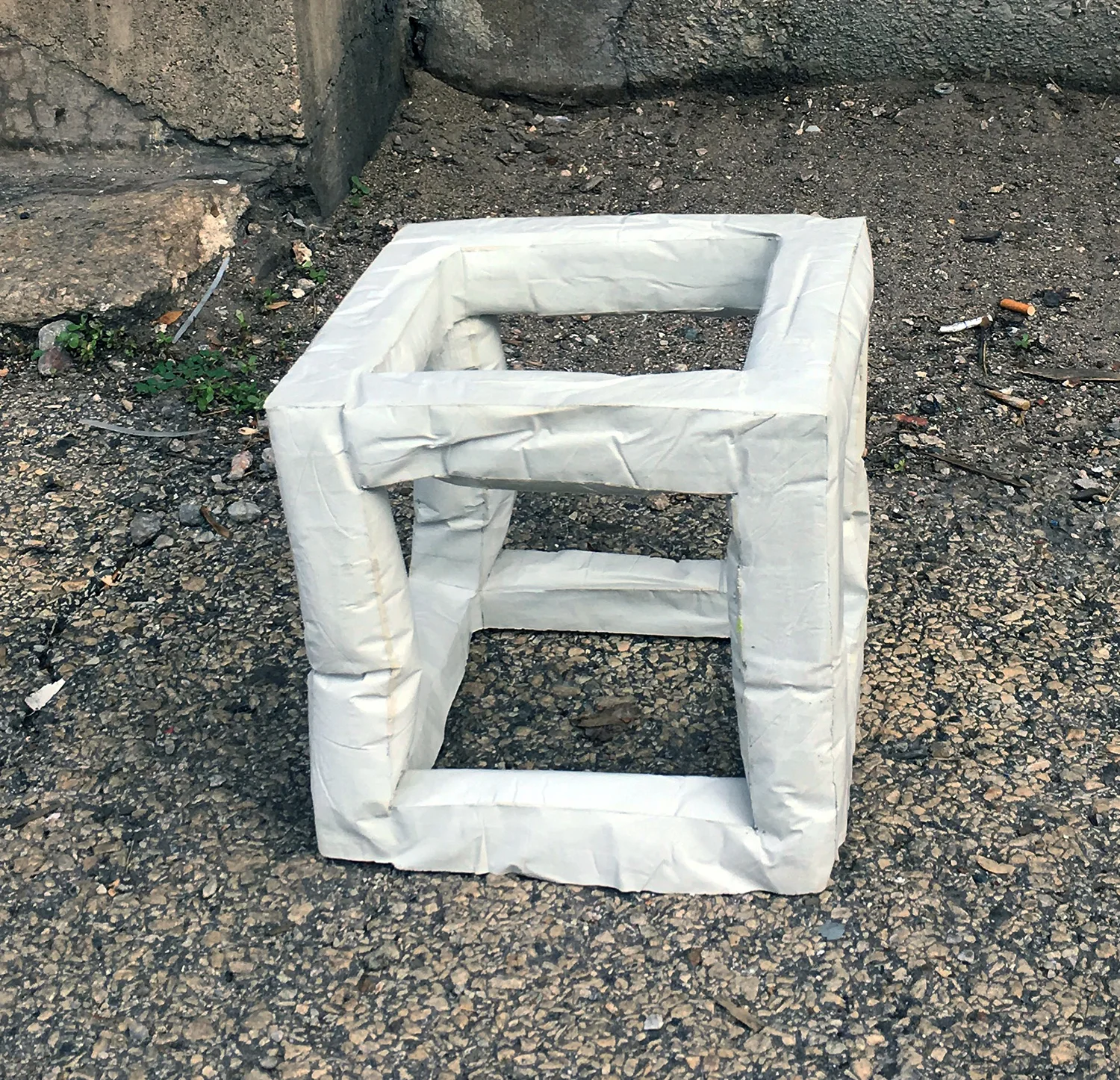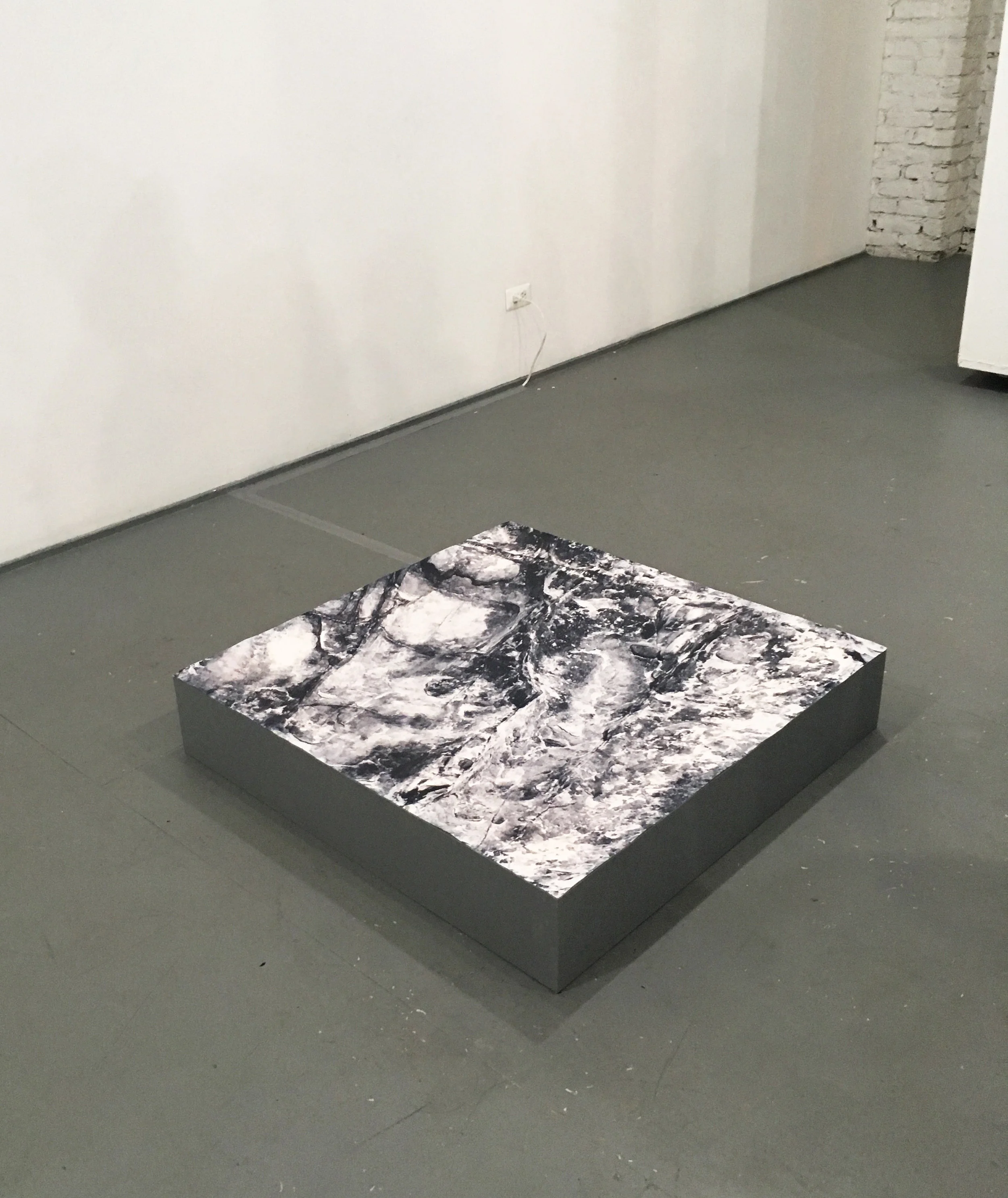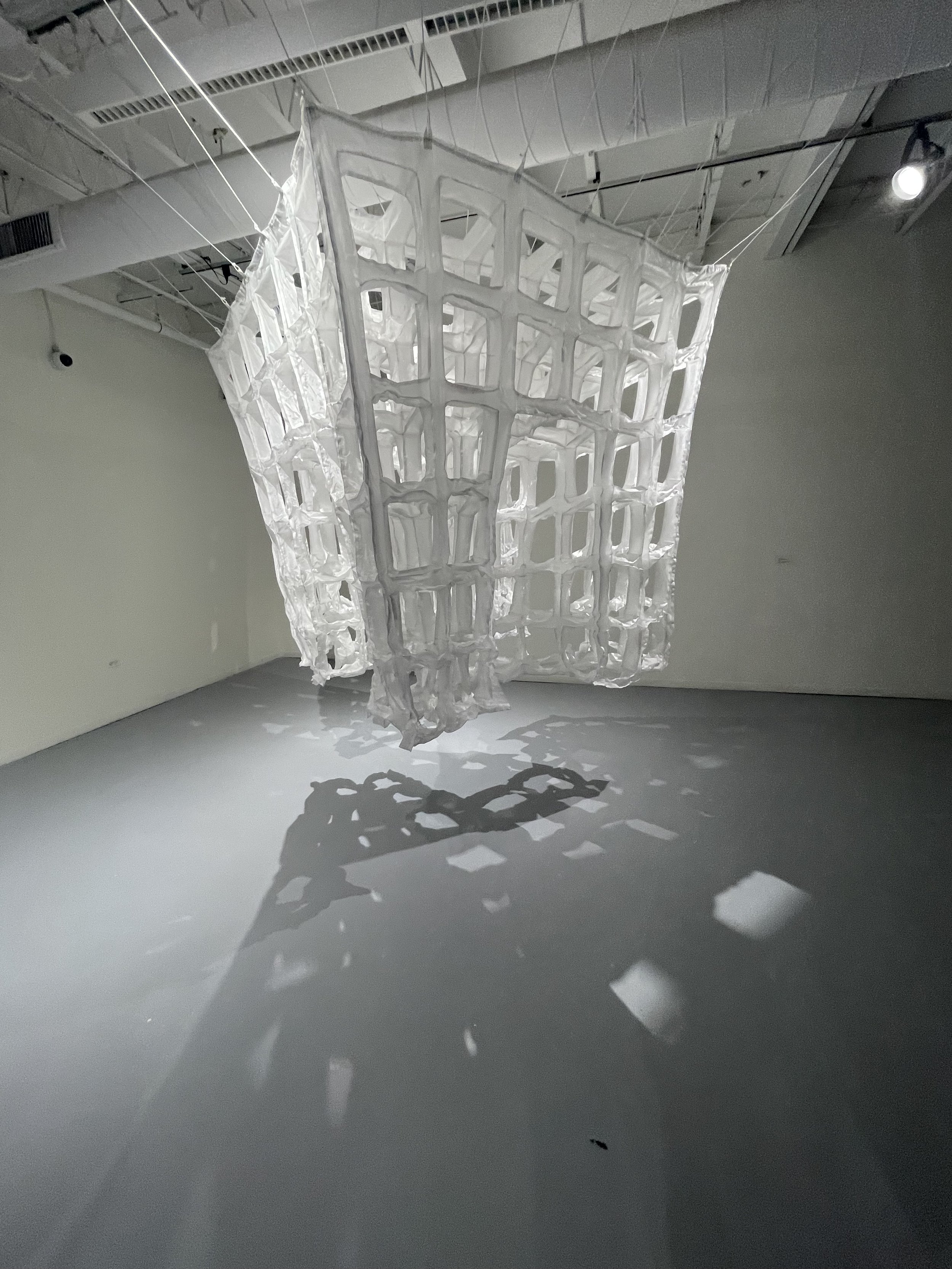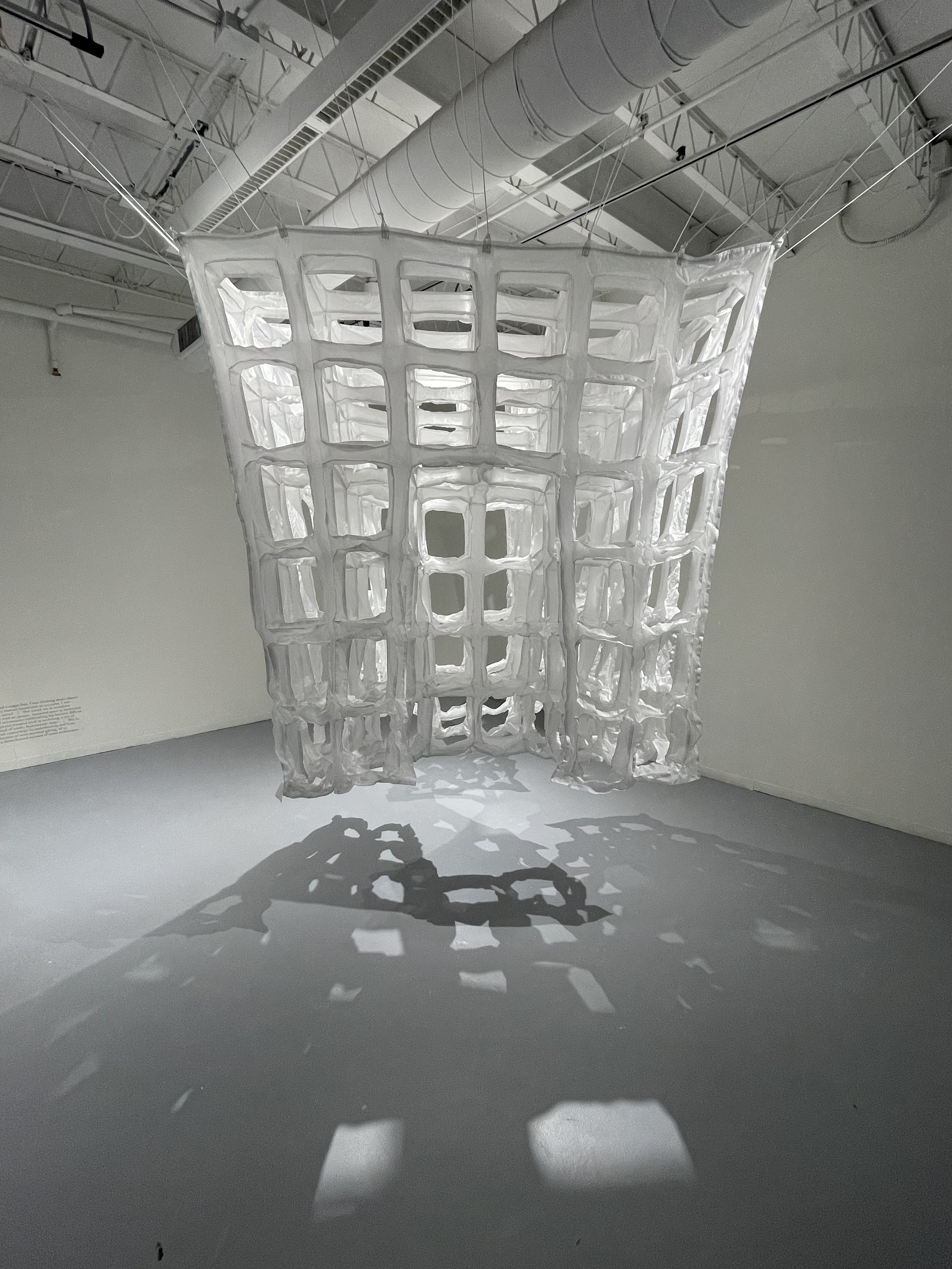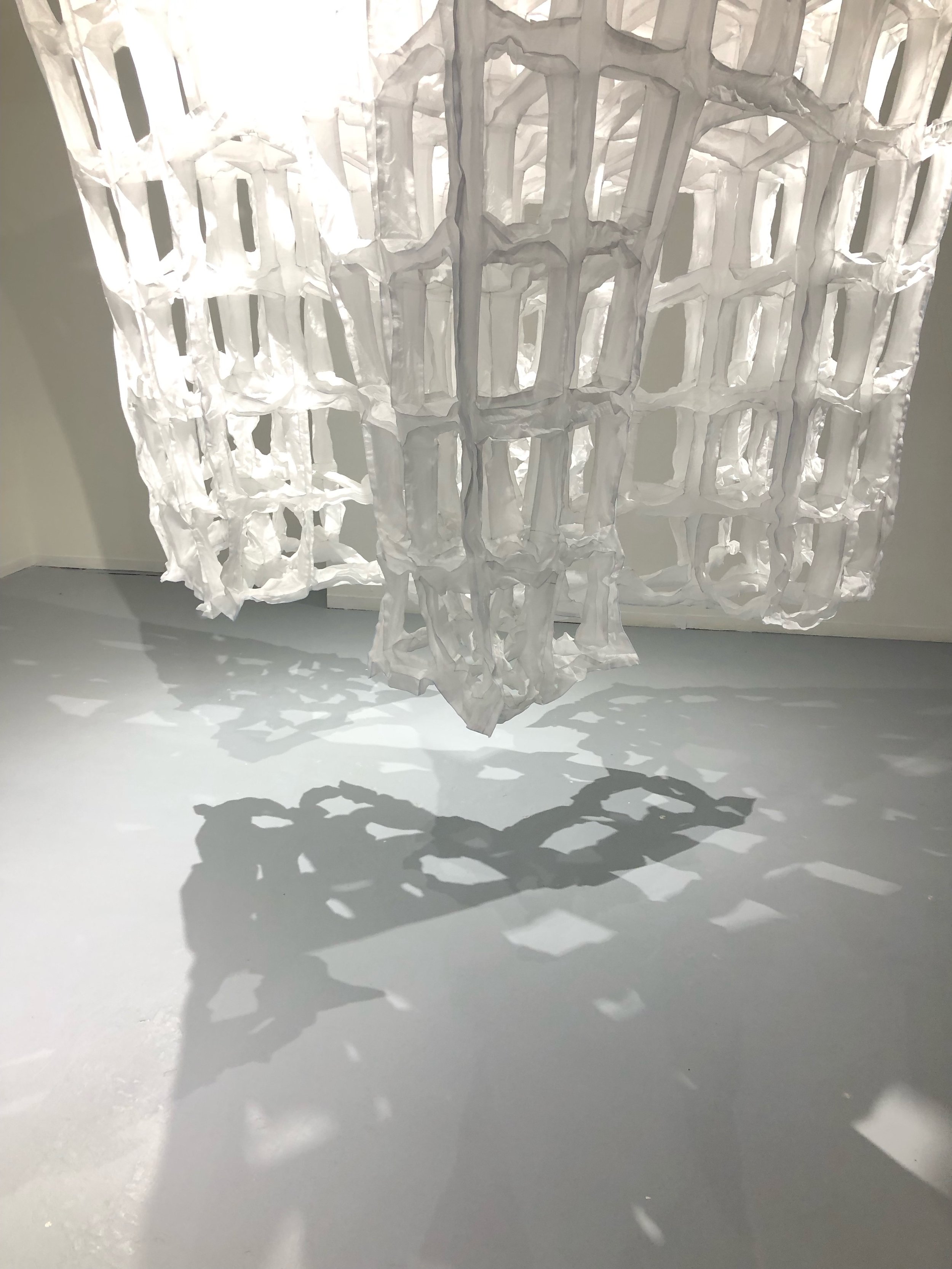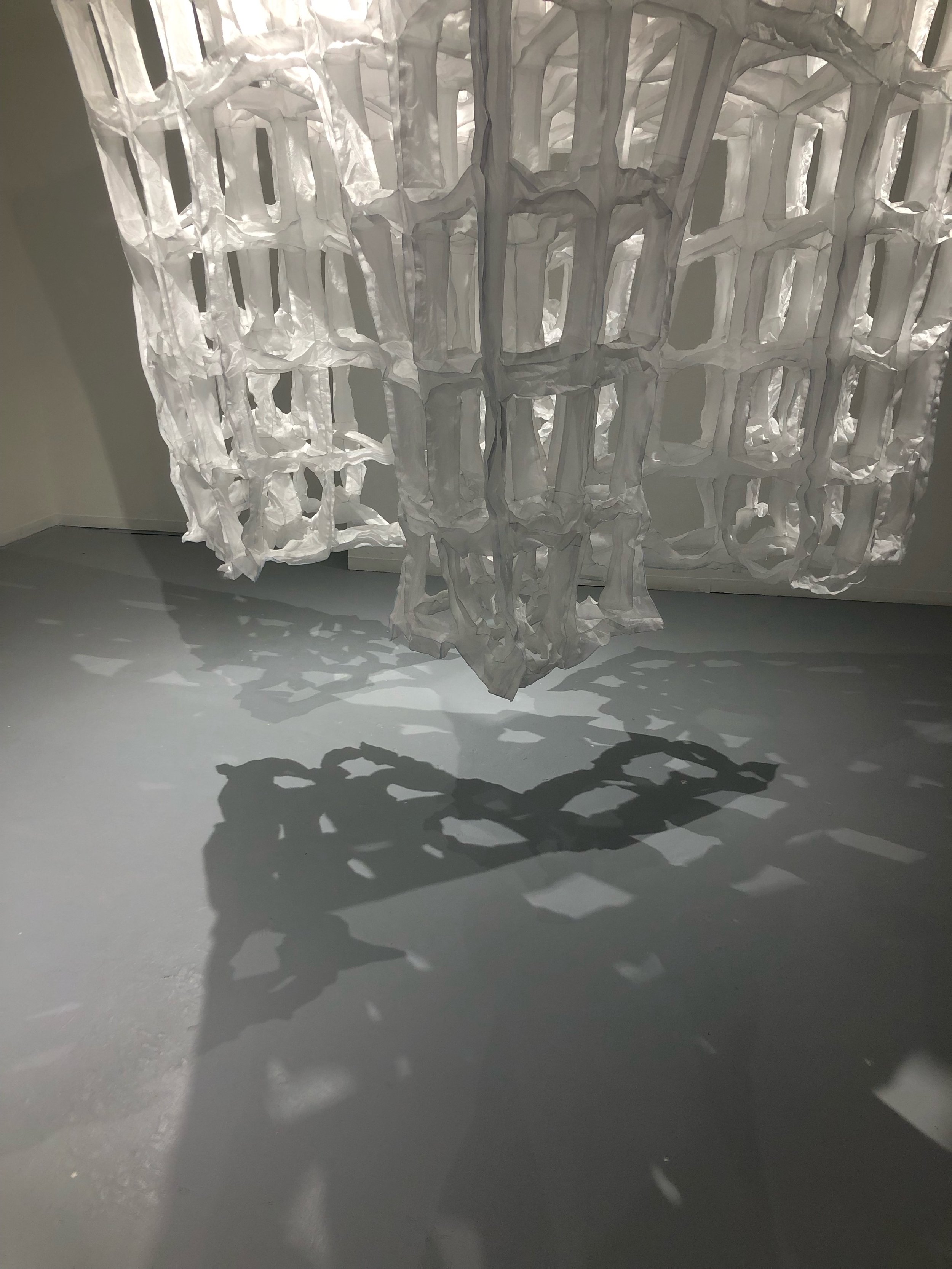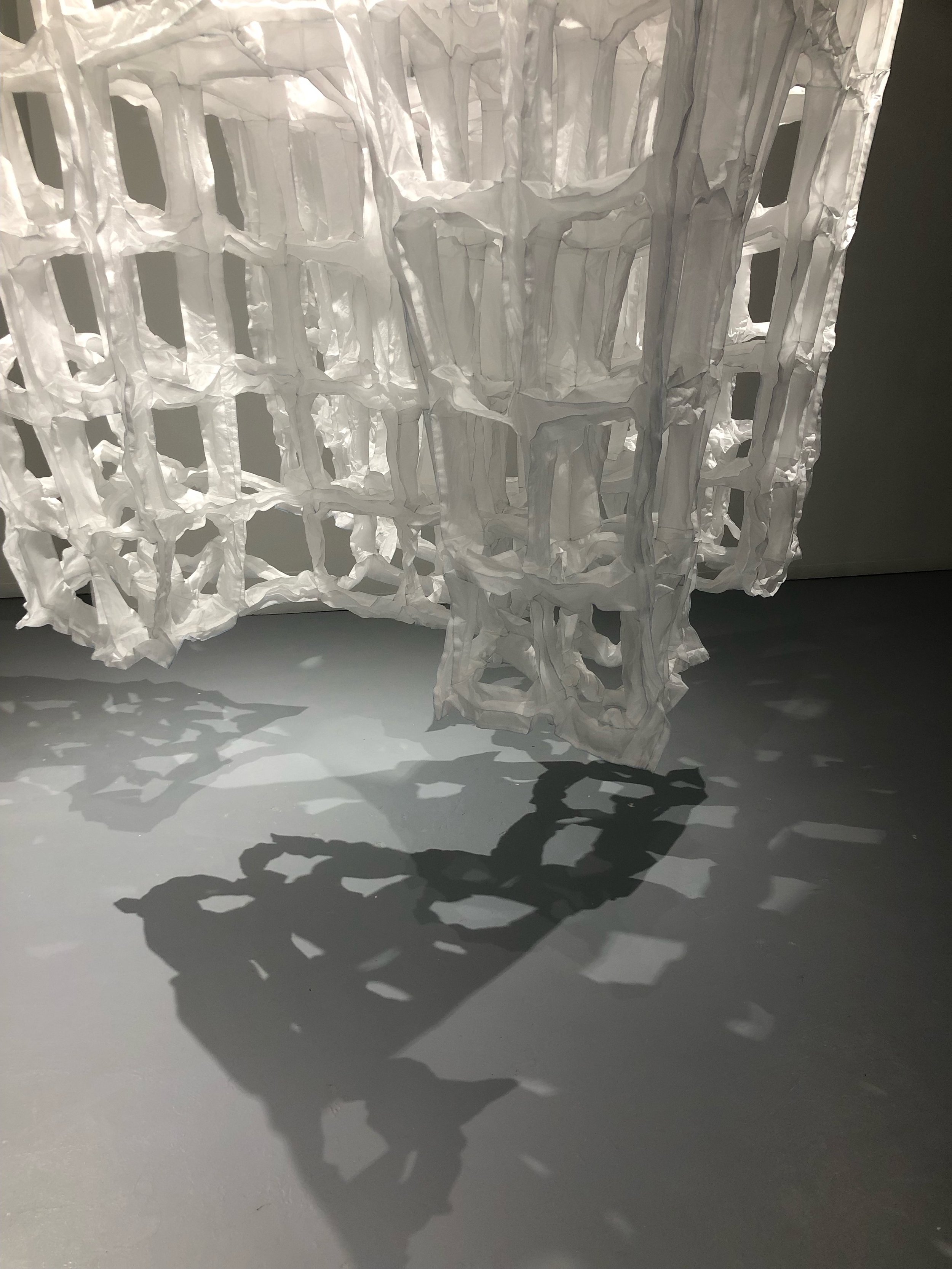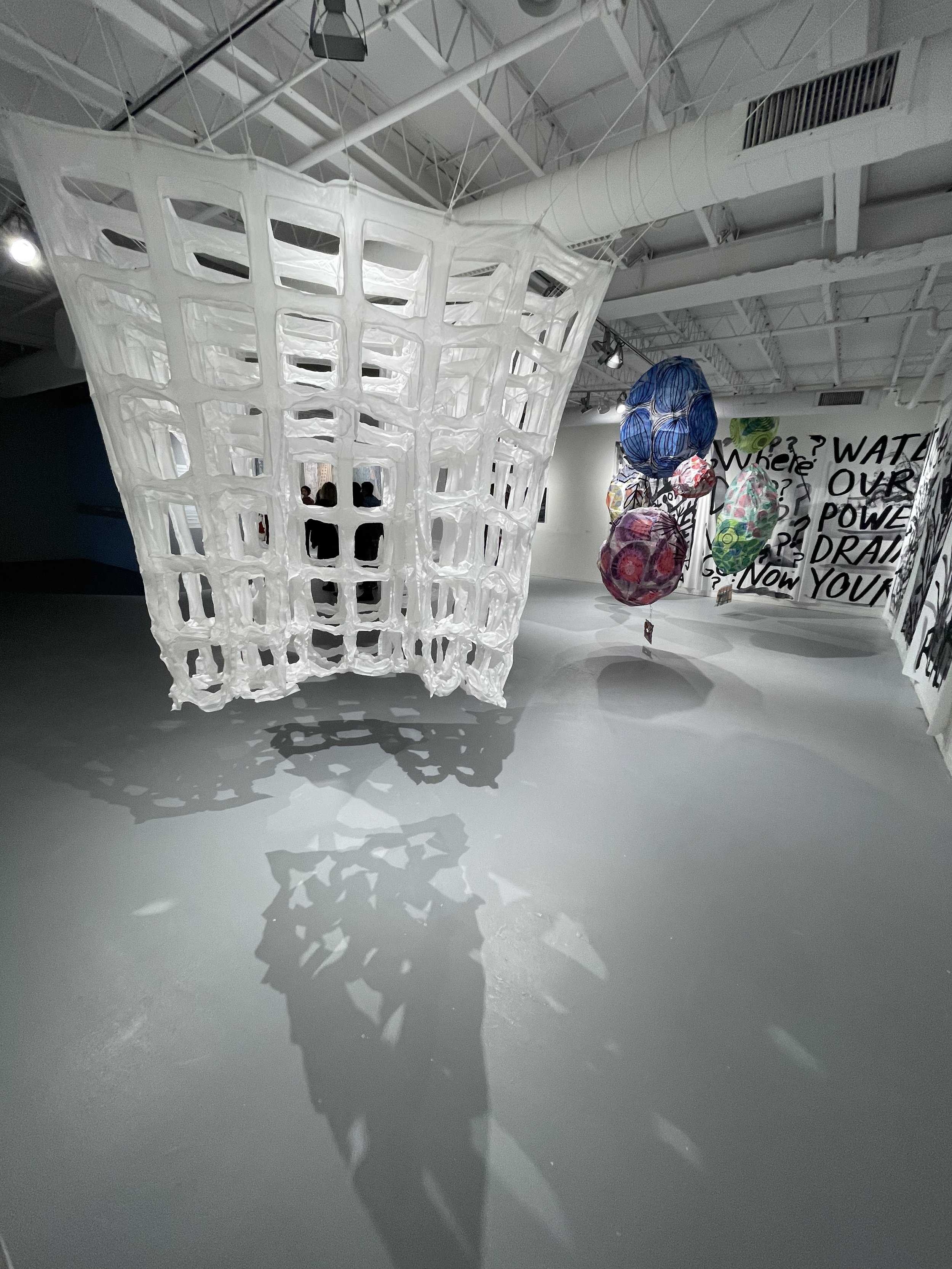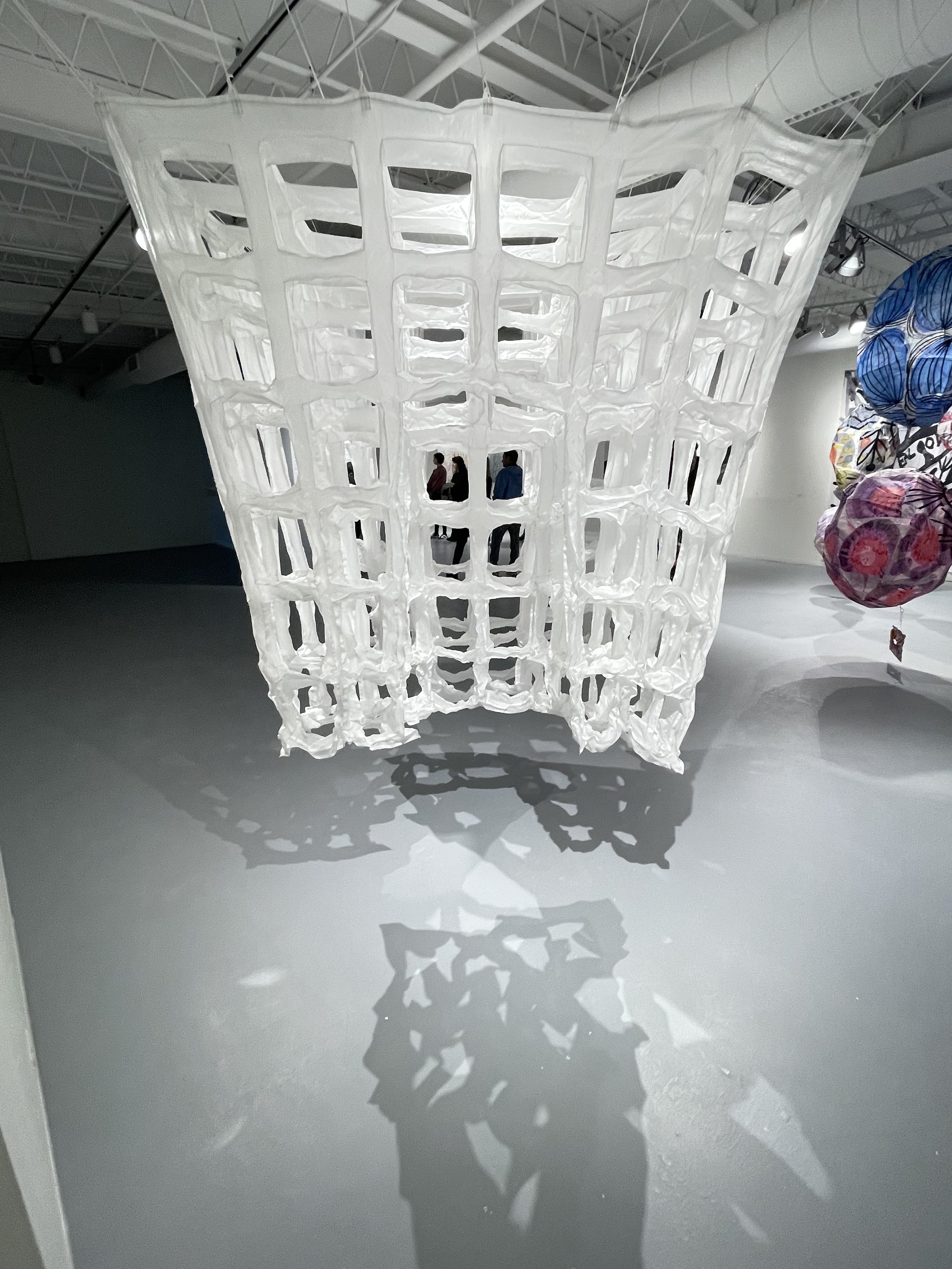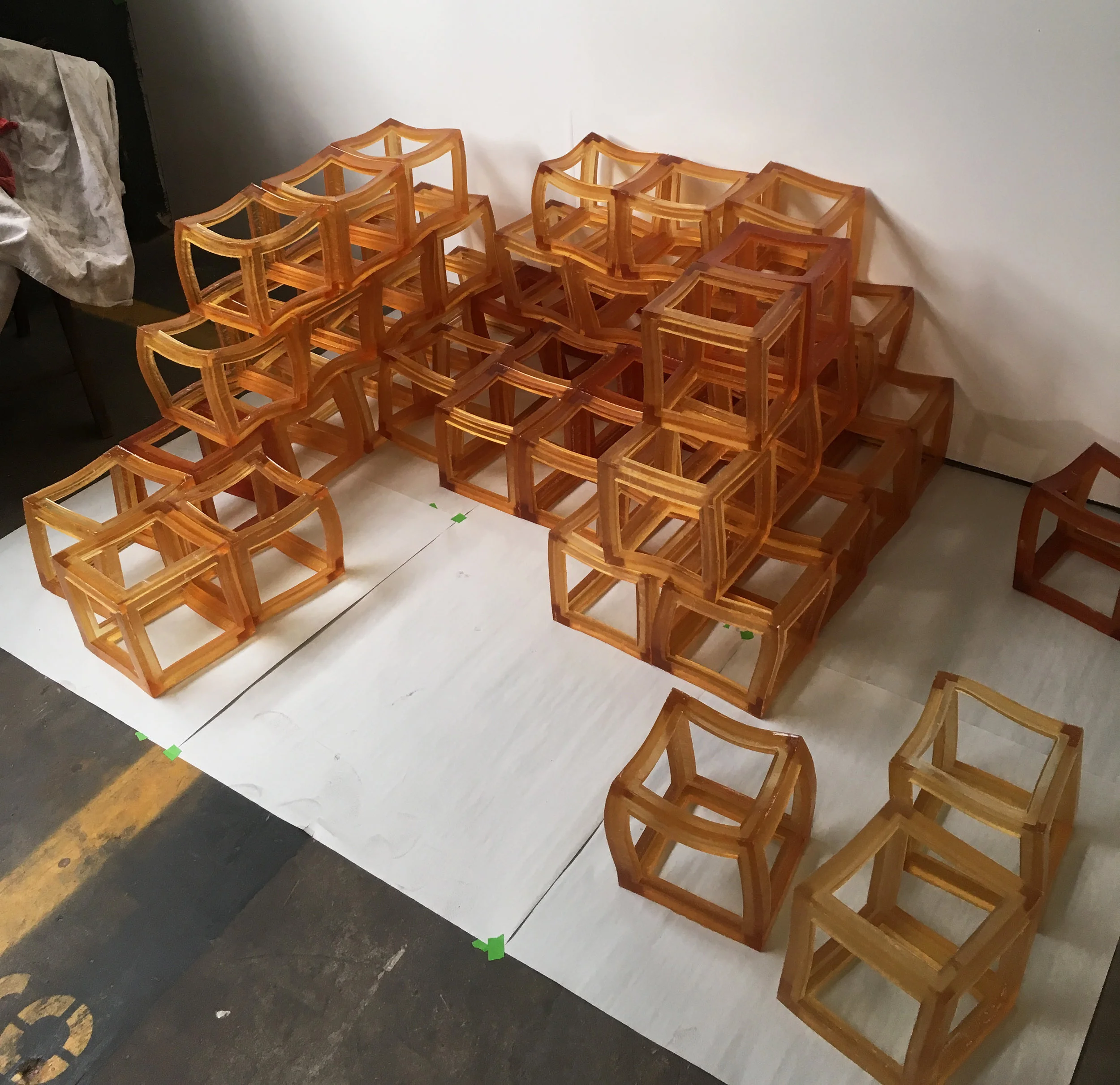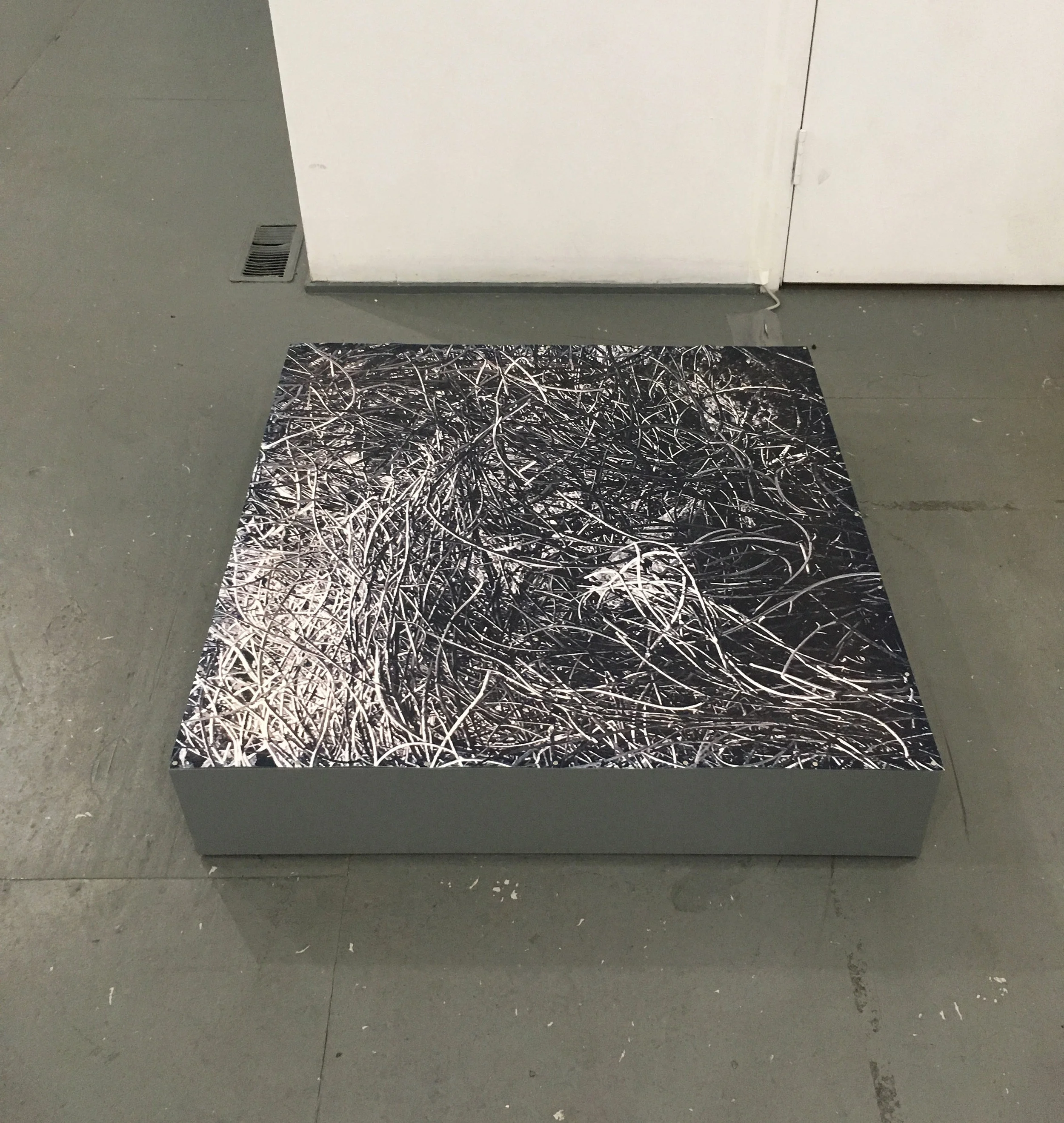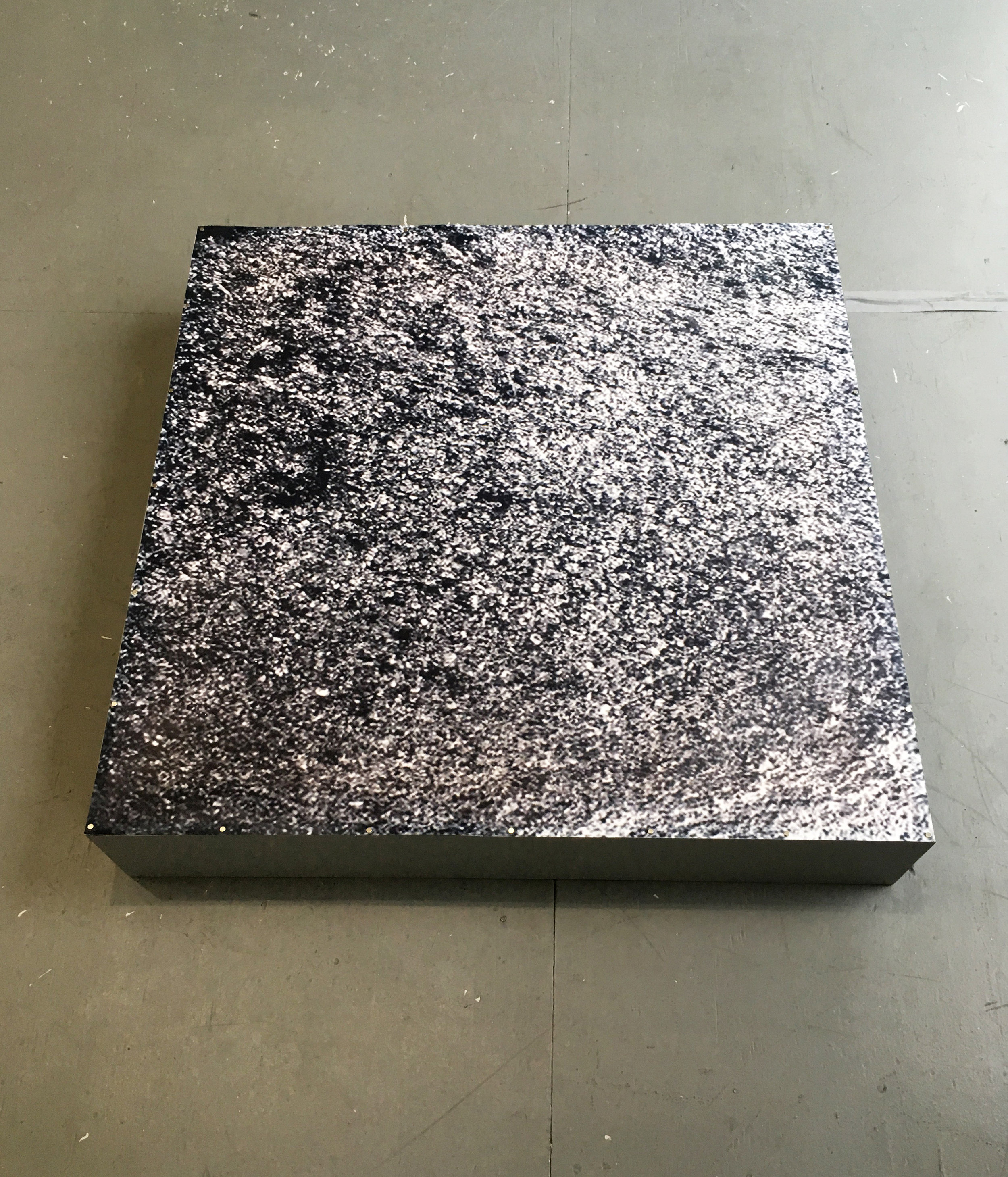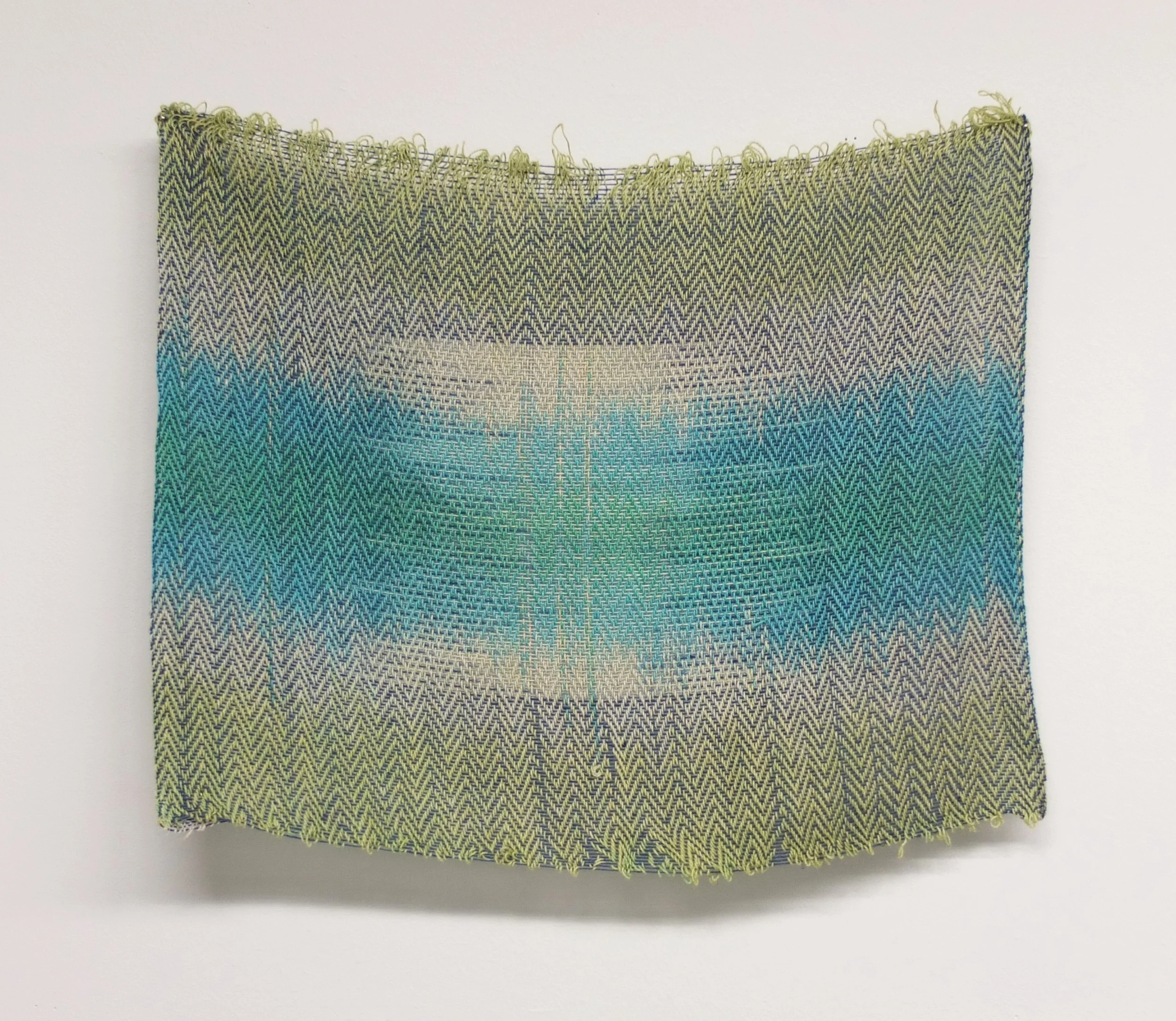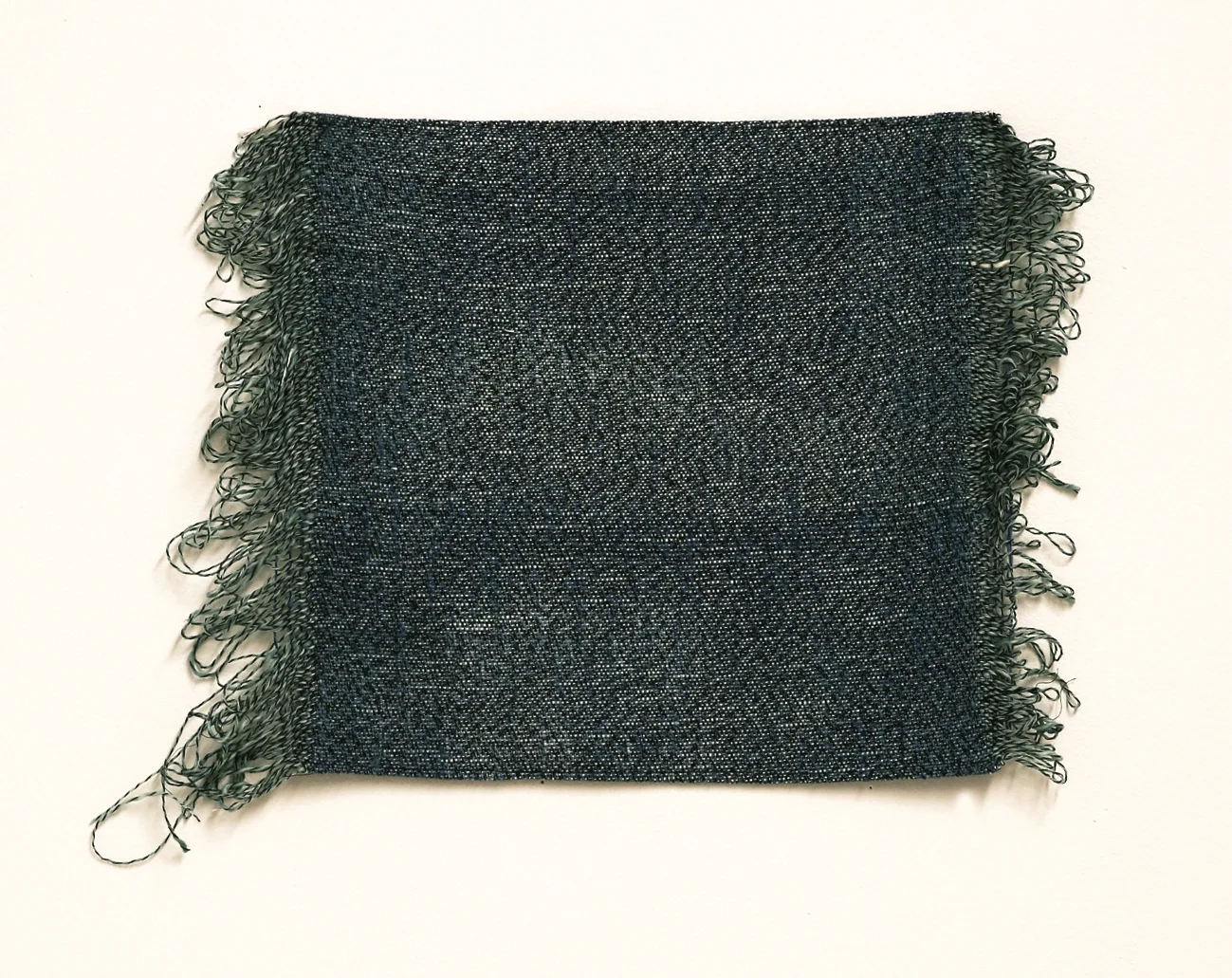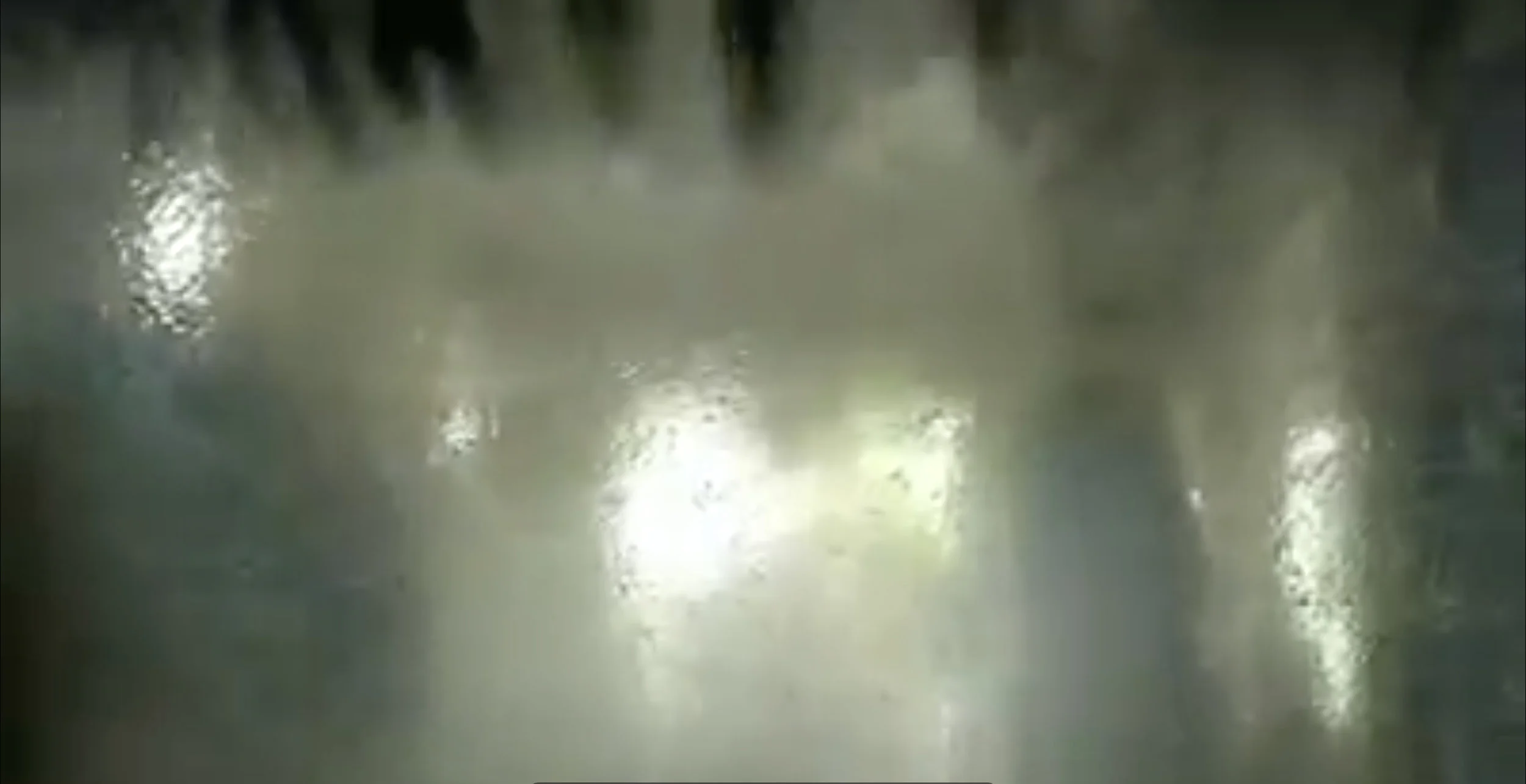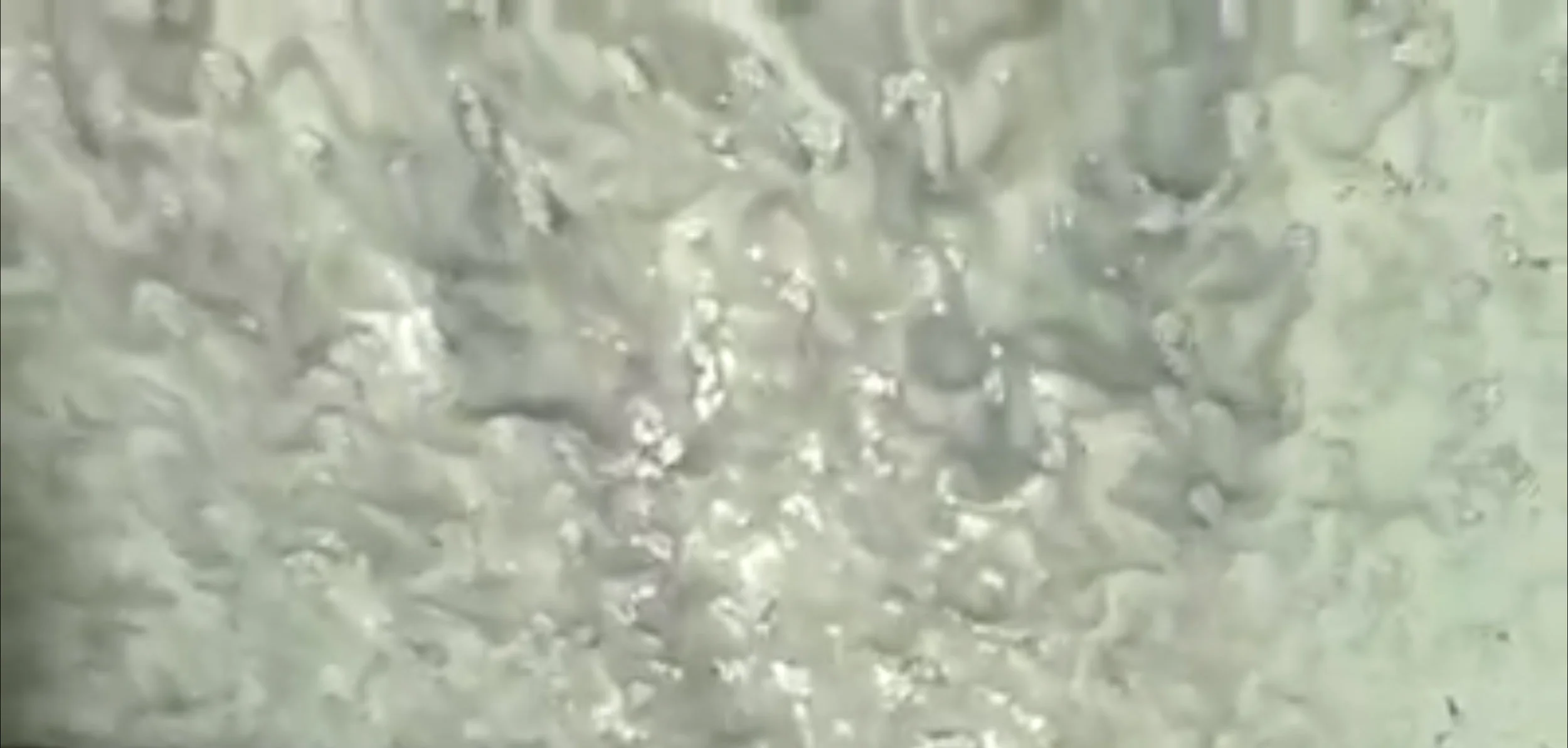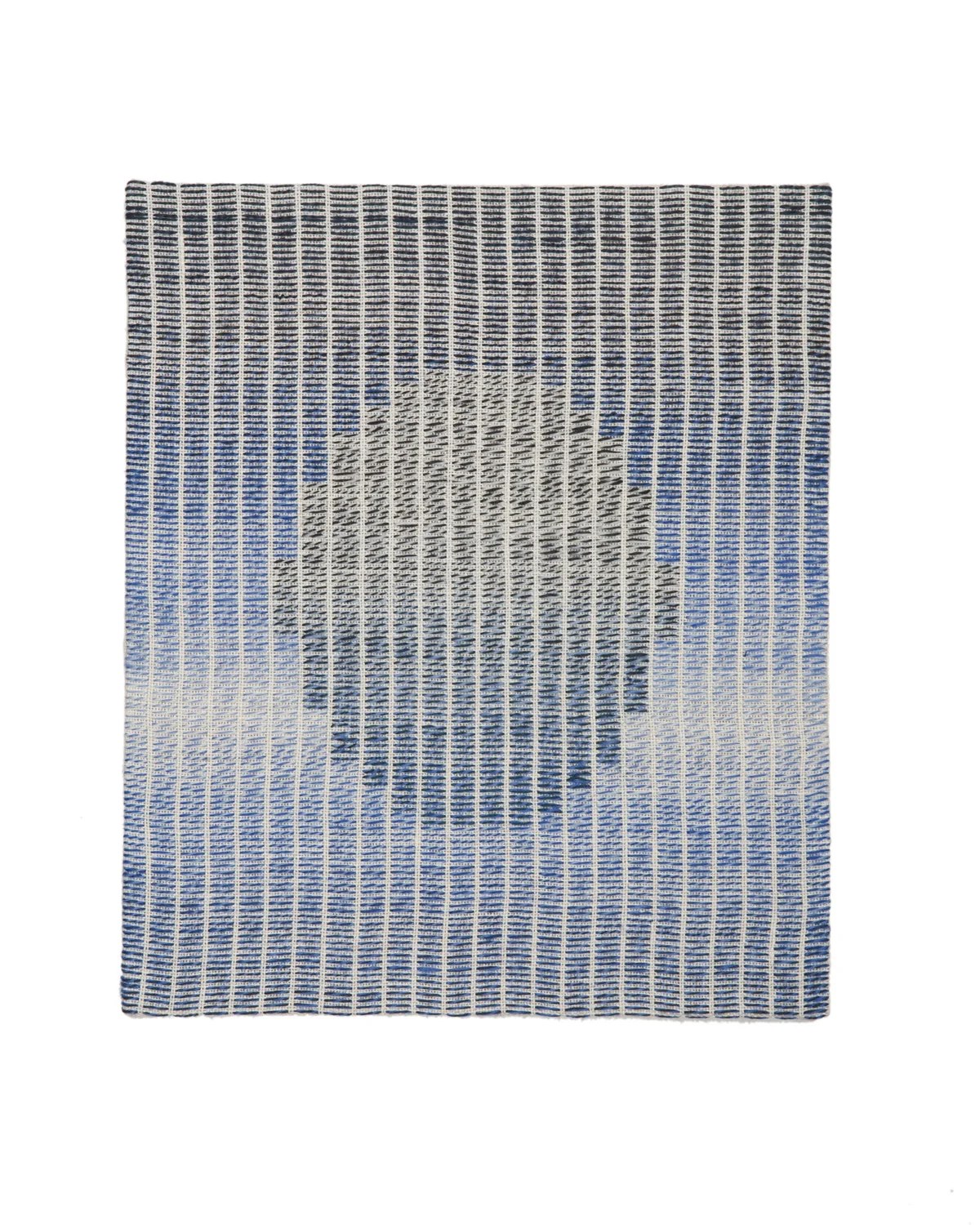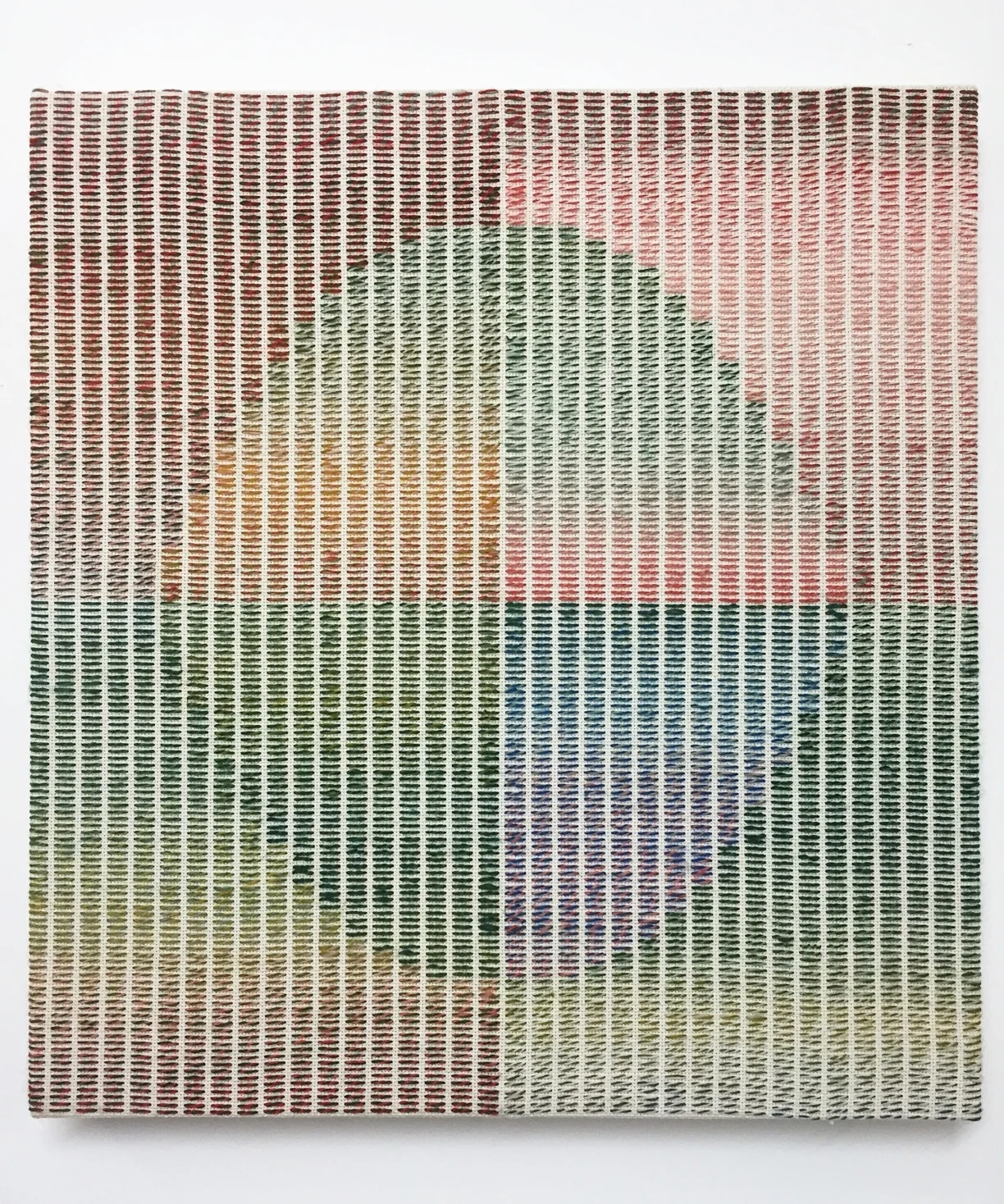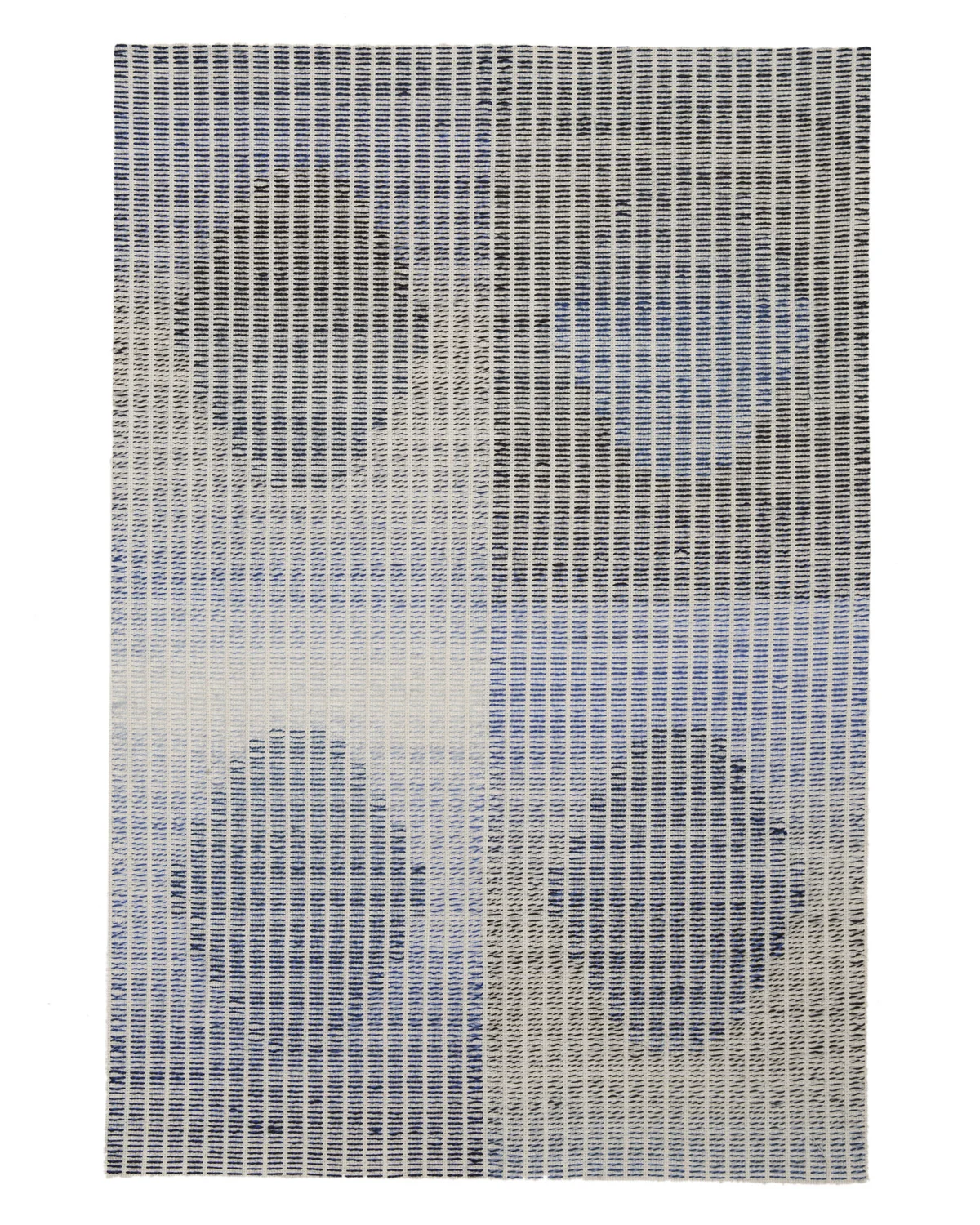2017
Rope, paint, eye-hooks, plywood.
Iterative works inspired about Paul Virilio's text Open Sky.
I'm thinking about the life span of a piece, a sculpture or installation that is used in a performance and video documentation that leaves the residue of an object that is then another piece.
I have been interested in exploring the intersection between the material and the nonmaterial, the physical and the virtual, real-time and virtual-time, and the actual and the technological. By capturing the collapse of physical space through time, I highlight that moment of intersection. I am using the metaphor of the collapsing of physical space to represent the flattening of our perception of our environment due to our increasingly immediate digital world.
Our instantaneous and immediate understanding of digital time has caused a change in our interaction with the physical world. I am hoping to maintain an emphasis on tangible experiences in the material world while interpreting abstract concepts of space and time. It is important to define time or what lies under the umbrella of the notion of time. The idea of ‘real time’ includes the speed of time, light, and reality of virtual immediacy. By virtual immediacy, I mean the duration of the transmission of messages; how quickly information can be sent and received, no matter the physical distance between places. This makes me curious about the duration of event and the duration of communication. Is the duration of the event what is critical? Or is what is important how that event then affects its environment on a micro and macro scale? Is it the event that is important or the result?
For this video, I turned my studio into a green screen, and I have created a three dimensional net grid that is anchored to the floor and ceiling. The X, Y, and Z axes are physically articulated in rope form. I am using the tension of the rope to depict time, the fourth dimension. The inflated volume of the net cube in space equates a four dimensional experience (space and time).
The tension of the grid in space is slowly removed. The anchor points are cut in even intervals. I literally walk around the object in space and cut through the tautness. The physical grid slowly gets freed and then collapses. The reaction of the object to being cut becomes more extreme through its duration. The matrix buzzes, vibrates, sways, flings, falls, and collapses.
The green screen is a representation of a virtual, imagined space.
I have been utilizing the grid as a universal icon within art and as an entry point for thinking about surveying space. It signifies mapping and coordinates very literally with the X, Y, and Z axes. It is utilized in technological mapping and virtual programing software, city planning, systems and collapsing synapses of the brain, as well as how people see and experience the world through technology, monitors, and photography.
Through this video, I am trying to articulate the flattened perception of our reality due to technological immediacy and how we now perceive time. Cutting the tension (the fourth dimension), results in the physical collapse of this object. This physically actualizes the flattening of perception into a two-dimensional screen, monitor, or virtual space. Once something is created and completed, we no longer read the making process within it. The labor and process of creation are lost.
The more I think about this and our technological climate, I recognize the importance in presenting the physical alongside the virtual. It is valuable to focus on making work that is a result of their point of intersection.
I have been thinking about what marks the event and how to understand an event during and after it happens. How does one begin to signify change as it is happening? I have always been fascinated with ideas of Op Art and the gestalt. It relates to the interest in pattern and how patterns take form and evolve. In the case of this video, the eyes use the understanding of density and the change in density in the grid to understand a physical representation, the fourth dimension, and physical space. Thus, a change in density or shape is how one visually understands the collapse or material change. It is how you can read the interaction. I realize the gestalt is phenomenological; it is the study of that which appears and is experienced.








